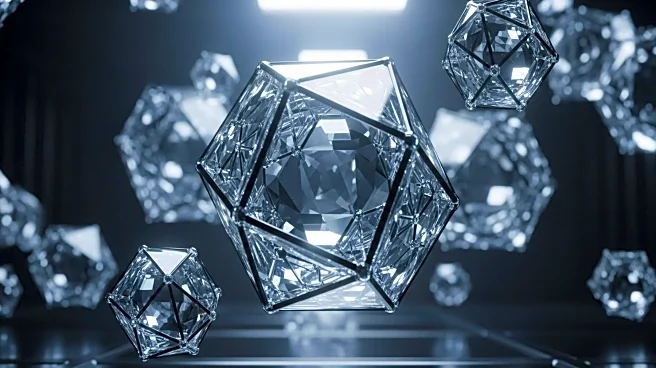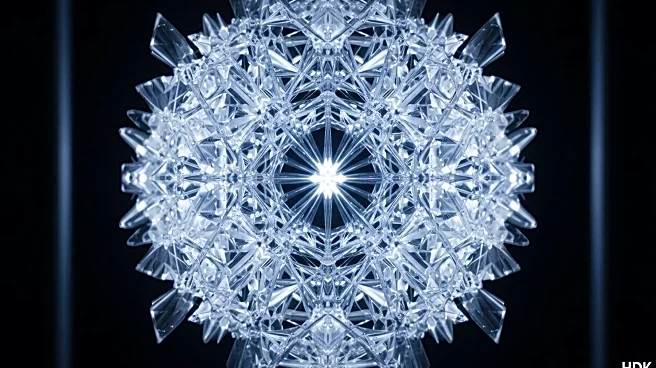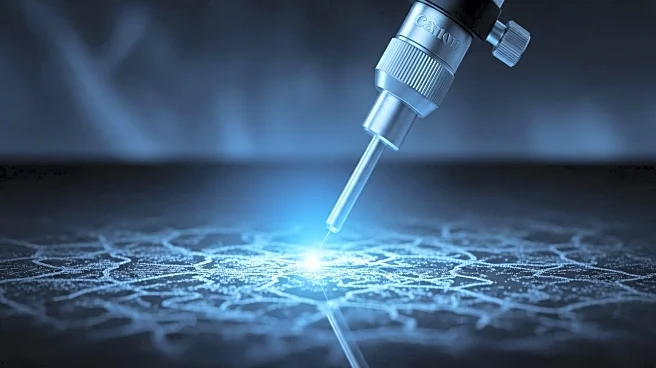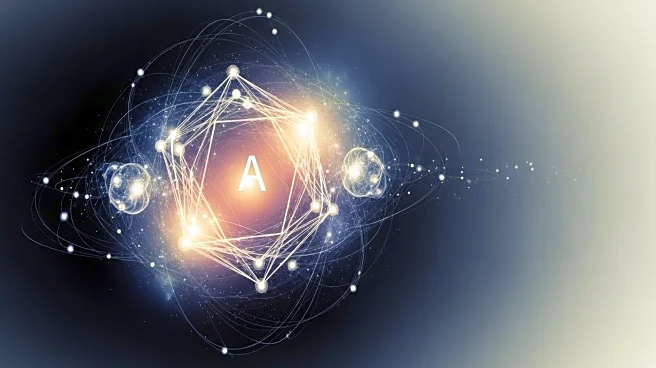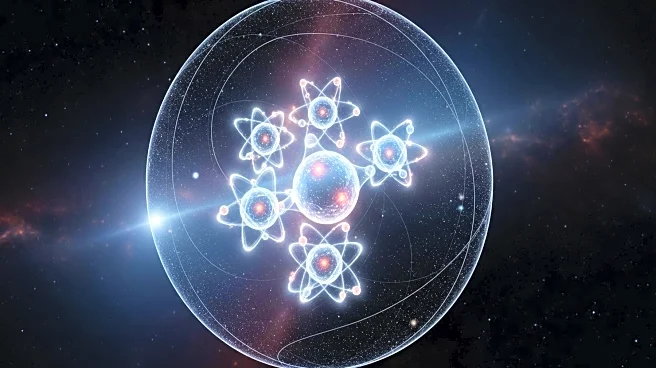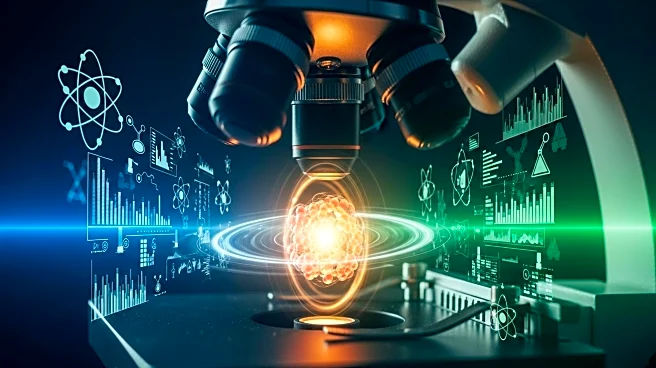What's Happening?
Physicists at the University of Colorado Boulder have created a new type of time crystal using liquid crystals, which are materials commonly found in phone displays. This advancement represents a phase of matter where particles exist in constant motion, forming stable, repeating patterns that can be observed under a microscope or even with the naked eye. The research, published in Nature Materials, involved designing glass cells filled with liquid crystals that, when illuminated, exhibit visible, persistent, and periodic motion. This development marks the first time humans can directly observe time crystals, potentially opening up applications in anti-counterfeiting and data storage technologies.
Why It's Important?
The creation of visible time crystals could have significant implications for various technological applications. Time crystals offer a new way to store and manipulate data, which could revolutionize fields such as data storage and security. The ability to observe these crystals directly enhances their potential use in anti-counterfeiting measures, providing a novel method to verify authenticity. Additionally, the research contributes to the broader understanding of phases of matter, potentially leading to further scientific breakthroughs in material science and quantum physics.
What's Next?
The researchers suggest that time crystals could be used in various applications, including adding these materials to currency to make them harder to counterfeit. By stacking different time crystals, engineers could potentially store vast amounts of digital data. The team plans to explore further technological directions and applications for time crystals, pushing the boundaries of this emerging field.
Beyond the Headlines
The development of time crystals challenges traditional concepts of matter and time, offering a glimpse into the possibilities of manipulating matter in novel ways. This research could lead to ethical and philosophical discussions about the nature of time and reality, as well as the potential for creating artificial forms of matter.
